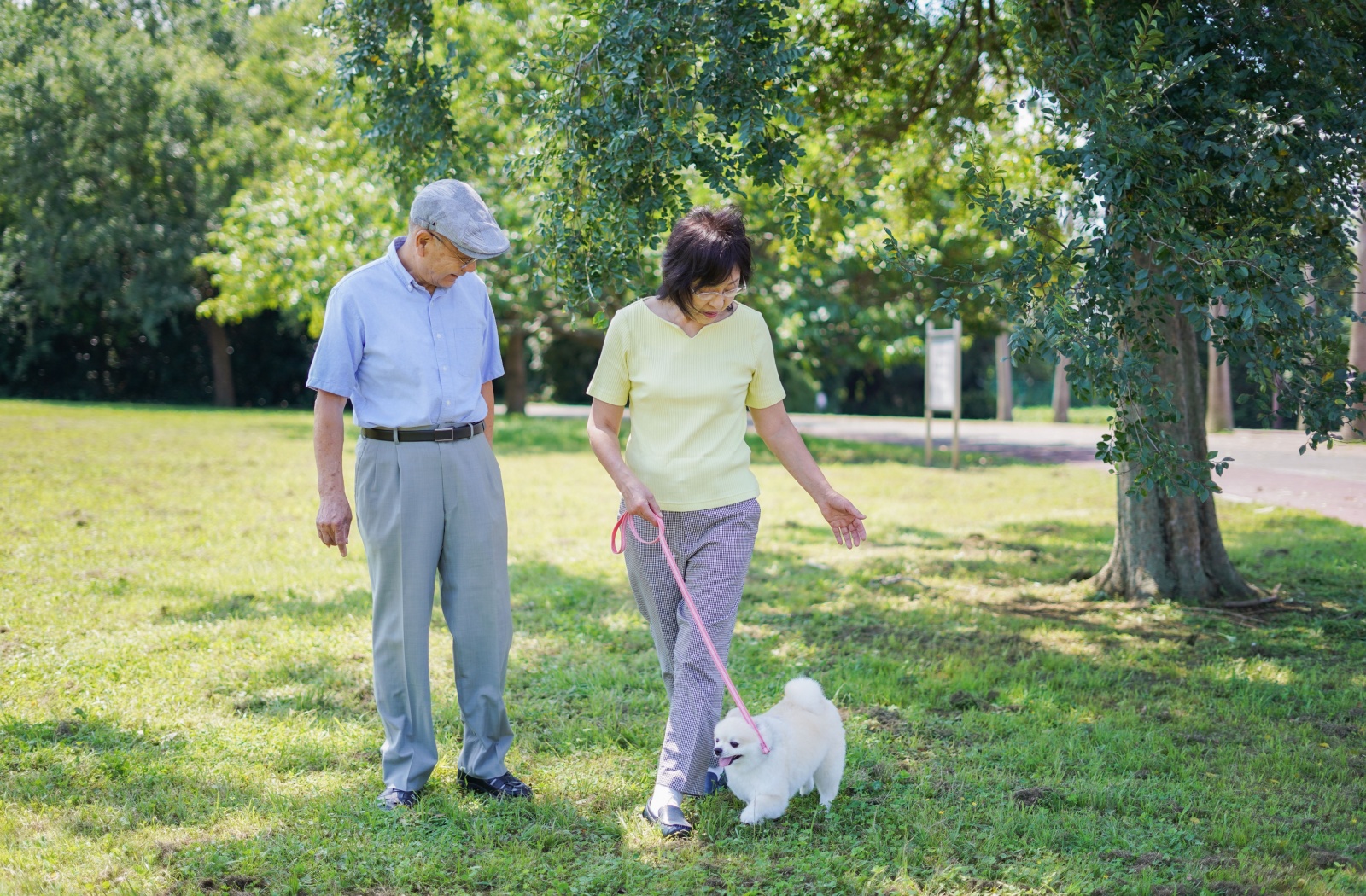Walking is a gentle and accessible exercise that offers numerous benefits for physical and mental health, including a healthier heart, stronger muscles, reduced stress, and improved sleep.
As we age, mobility can become an obstacle to independence and daily activities due to joint stiffness, muscle weakness, and balance issues, making a simple walk challenging. However, supportive strategies can encourage seniors to engage in and enjoy physical activity.
Loved ones and caregivers can help older adults get back to walking with strategies that include balance exercises, mobility aids, social support, modified routes, progress monitoring, and patience.
No matter what lifestyle you enjoy, walking is an easy way to enhance your daily routine.
Understanding the Benefits of Walking for Seniors
Walking offers numerous benefits for older adults. It aids in maintaining cardiovascular health, managing weight, strengthening muscles, and improving balance, which can reduce the risk of falls.
Regular walking can enhance mood, alleviate symptoms of depression, and support cognitive health.
Studies show that physical activity, such as walking, can significantly extend the lifespan of people with dementia, emphasizing the importance of maintaining an active lifestyle even after a diagnosis.
Assessing Capabilities & Health Status
Before starting a walking program, it’s crucial to have a good understanding of your health and how your body moves. If a loved one wants to begin a new movement routine, evaluating their health status and physical capabilities can set them up for success.
Consulting with healthcare providers can help identify underlying conditions affecting mobility, such as arthritis, osteoporosis, or cardiovascular issues. A tailored approach can help you or a caregiver in developing a walking plan that’s safe and enjoyable.
Creating a Supportive Environment
A safe and encouraging environment can motivate seniors to start walking. Access to walking paths that are free from obstacles, well-lit, and have even surfaces helps prevent trips and falls.
In assisted living communities like Peregrine Senior Living at Cheektowaga, supportive staff members and a caring community can provide personalized assistance, helping residents feel comfortable and motivated to engage in physical activities.
Starting Slowly & Setting Realistic Goals
Consistency is key, and setting realistic goals is how you get there. When introducing older adults to a new walking routine, start gradually.
Begin with short distances at a comfortable pace, so you and your loved one can build confidence and assess their endurance. Over time, as strength and stamina improve, the duration and intensity can be increased.
Having achievable goals helps keep everyone motivated and offers a satisfying sense of success.
Incorporating Strength & Balance Exercises
Integrating strength and balance exercises can enhance walking ability and reduce the risk of falls.
For example, heel and toe raises can be performed while seated to help strengthen calf and shin muscles, improving balance and ankle mobility.
These exercises can be done by pointing the toes to raise the heels or lifting the toes off the ground while keeping the heels connected to the floor, respectively.
Use Assistive Devices When Necessary

For some seniors, assistive devices like canes or walkers may be beneficial in providing stability and confidence while walking.
Proper assessment by a physical therapist can determine a suitable device and correct usage. Gait training, which involves practicing walking patterns with the aid of devices, can be a practical component of rehabilitation for those relearning to walk.
Addressing Psychological Barriers
Fear of falling or experiencing pain can be significant deterrents to walking. Building confidence through supervised sessions with caregivers or physical therapists can help alleviate these concerns. Celebrating progress, no matter how small, reinforces positive behavior and encourages continued effort.
Creating a supportive and understanding environment can aid in overcoming these psychological barriers.
Encouragement from family members, peers, and staff can make a meaningful difference in how seniors perceive their abilities.
Incorporating gentle, goal-oriented activities into your loved one’s routine helps build a sense of accomplishment and autonomy, ultimately transforming fear into motivation and restoring a sense of control over their mobility journey.
Engaging in Social Walking Activities
Social engagement is proven to support motivation. Walking with friends, family, or a community group can make the activity more enjoyable and provide social interaction, which is vital for mental health.
Assisted living communities often offer organized group outings or walking clubs, fostering community and shared purpose among residents.
Monitoring Progress & Making Adjustments
Keep track of walking routines, noting distances covered, duration, and any discomfort experienced. By monitoring your loved one’s progress, you can make necessary adjustments. It’s also an easy way to track and motivate success.
Regular consultations with healthcare providers can help keep a walking program aligned with the person’s health status and goals.
Exploring Alternative Forms of Exercise
If walking presents significant challenges, alternative low-impact exercises like swimming or cycling can provide similar benefits.
Water-based activities, in particular, can be gentle on the joints while promoting cardiovascular health and muscle strength.
Additionally, practices like tai chi or yoga can improve flexibility, balance, and mental well-being.
Encouraging Consistency & Patience
Rebuilding mobility and strength is a gradual journey that requires patience, consistency, and encouragement. Peregrine Senior Living at Cheektowaga is a community committed to supporting our residents every step of the way.
Integrating even small amounts of walking into a daily routine can lead to meaningful improvements in physical health, independence, and overall well-being. We celebrate each milestone, no matter how small.
We foster a safe and supportive environment for our residents by offering resources, social connections, and community to help them embrace a more active and fulfilling lifestyle.
See how we’re transforming senior living with compassion and care. Tour our community today.












Thank you to Tyshawn from the Wounded Warriors Project for visiting our community and giving such a heartfelt presentation. We truly appreciate you taking the time to share your message with our residents. ... See MoreSee Less
1 CommentsComment on Facebook
Pictures from our last craft show. The vendors are so creative! ... See MoreSee Less
1 CommentsComment on Facebook
Every person carries a lifetime of memories, passions, and dreams. Those stories deserve to be celebrated.
Through The Peregrine Way, we honor each resident’s individuality by creating meaningful experiences that nurture mind, body, and spirit. Whether it’s rekindling a lifelong hobby, connecting through music, or simply sharing conversation over coffee, every day is a chance to live with joy and purpose.
We don’t just care for residents, we walk alongside them, helping every story continue with dignity, laughter, and love. 💗
peregrinecheektowaga.com/ ... See MoreSee Less
0 CommentsComment on Facebook
Let's Go Buffalo! ... See MoreSee Less
0 CommentsComment on Facebook
Congratulations to Danny, our Employee of the Month, and Jeanine, our Peregrine Proud winner! Keep up the amazing work. ... See MoreSee Less
4 CommentsComment on Facebook
We have a few squares left for the game on Sunday! Send us a message if you'd like to buy a square! ... See MoreSee Less
0 CommentsComment on Facebook